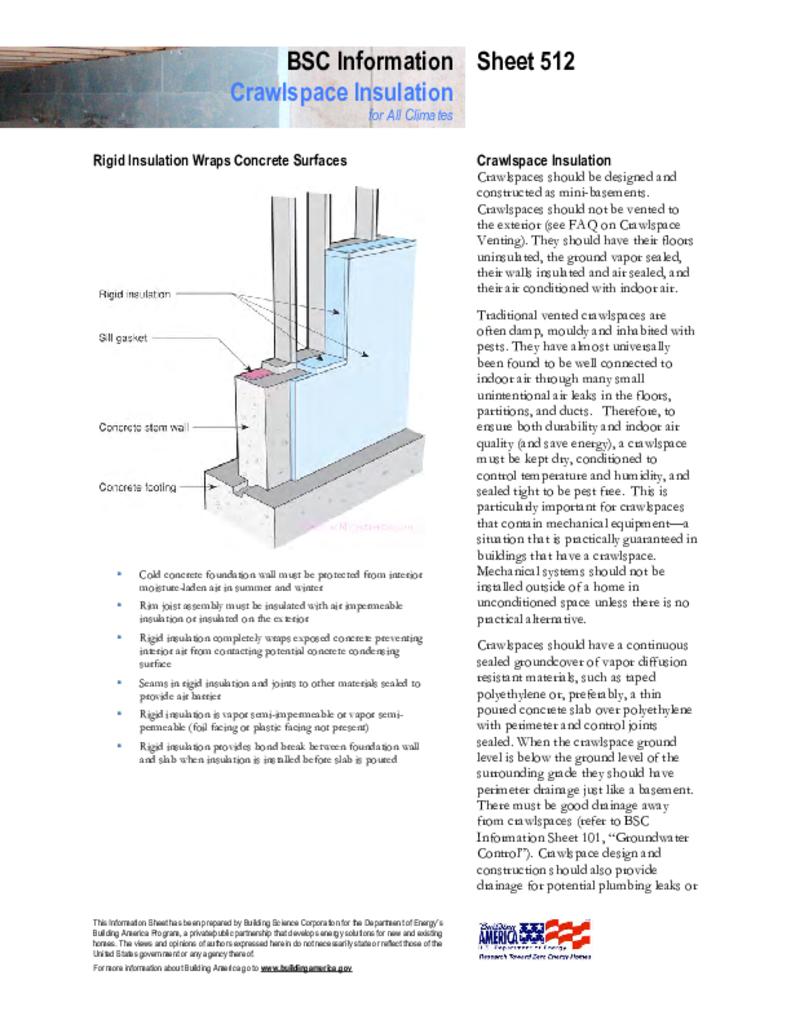Building codes often call for these vents as a means of.
Insulation under floor joists in crawl space code.
Insulation level are specified by r value.
Fiberglass rolls can be placed between joists but the fiberglass itself will need to be cut to fit properly between joists.
Where winter temperatures are extreme opt for insulating the walls and sealing off the crawl space entirely.
In moderate or dry climates without the threat of sustained subfreezing temperatures insulation between floor joists makes sense.
The higher the r value the better the thermal performance of the insulation.
They should provide a minimum of 1 square foot of vent area for every 500 square feet of crawl space area.
Sitting it on small chunks of foam will keep it from being in contact with the ground and absorbing moisture.
There should be vents on all crawl space walls.
When it comes to insulating the walls there are a couple of ways to go about this building code requires any crawlspace more than 5 feet high to have fire protection covering any foam products in which case you can frame a 2x4 or 2x6 wall 1 inch away from the concrete wall.
If the crawl space is ventilated which is ideal because it aids in the elimination of moisture then fiberglass insulation can be easily installed under the subfloor between the floor joists.
Gaps between the insulation and the floor can.
Floor insulation for moderate climes.
It is important to secure insulation and cover it with a vapor barrier in order to prevent moisture and the mold that often follows close behind.
Fiberglass insulation batts or rolls are the most economical and easiest diy choice for insulating between the floor joist in a crawl space.
The building code left little choice in the matter of insulating a crawl space since the 40 s.
When the basement or crawl space has vents installed insulating joist bays prevents cold drafts from penetrating into the home s interior.
R value is a measure of insulation s ability to resist heat traveling through it.
The table below shows what levels of insulation are cost effective for different climates and locations in the home.
Department of energy recommends r 11 3 insulation under floors in warm climates and an r 25 6 to 8 in cold climates.
Building codes state that the space between the bottom of the floor joists and the earth that is not a basement needs outside ventilation.

